
In this guide, we shall see what is embeetleIDE and test it.
In this guide, we shall cover the following:
- What is Embeetle IDE.
- Getting started with Embeetle IDE.
- Results.
1. What is Embeetle IDE:
Embeetle IDE is a clean and efficient integrated development environment (IDE) specifically designed for microcontroller units (MCUs). Here are some key features:
- Tailor-Made for MCUs: Embeetle IDE focuses on simplifying C/C++ programming for embedded systems, making it an excellent choice for MCU development.
- Graphical Configuration Tool: It includes a graphical tool for configuring pins, clocks, and peripherals, streamlining the setup process for your projects.
- Minimalistic Approach: Unlike bloated IDEs, Embeetle provides only the essential features needed for embedded programming, ensuring an intuitive experience.
- Support for RISC-V: Embeetle IDE also supports RISC-V microcontrollers, making it versatile for various architectures.
Whether you’re a beginner or an experienced developer, Embeetle IDE aims to simplify the development process and make embedded programming more approachable.
Feel Free to check their story from here.
2. Getting Started with Embeetle IDE
First, head to the main website from here.
From the main webpage, click on download:
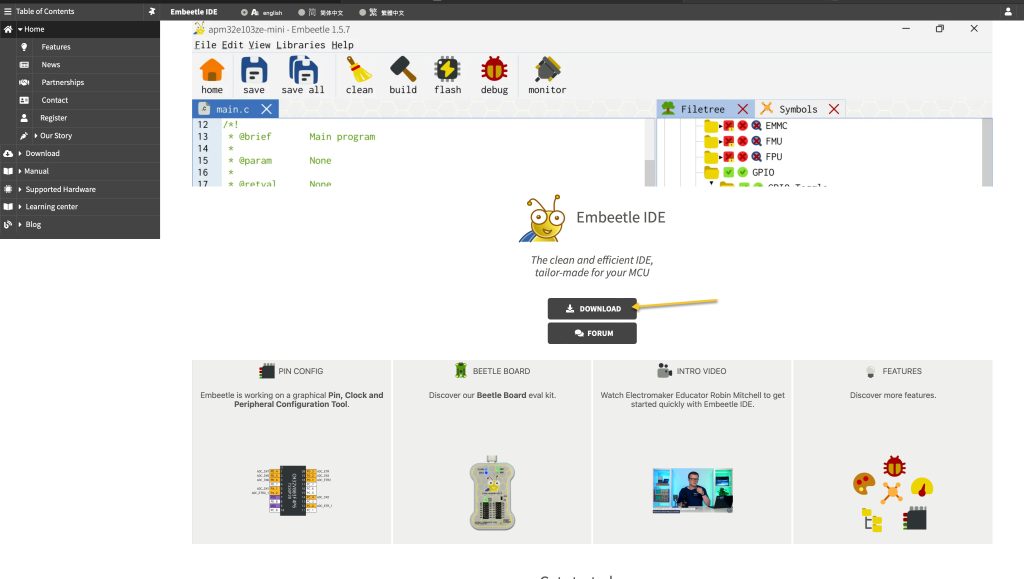
Then download the IDE by selecting your OS, currently it supports only windows and linux.
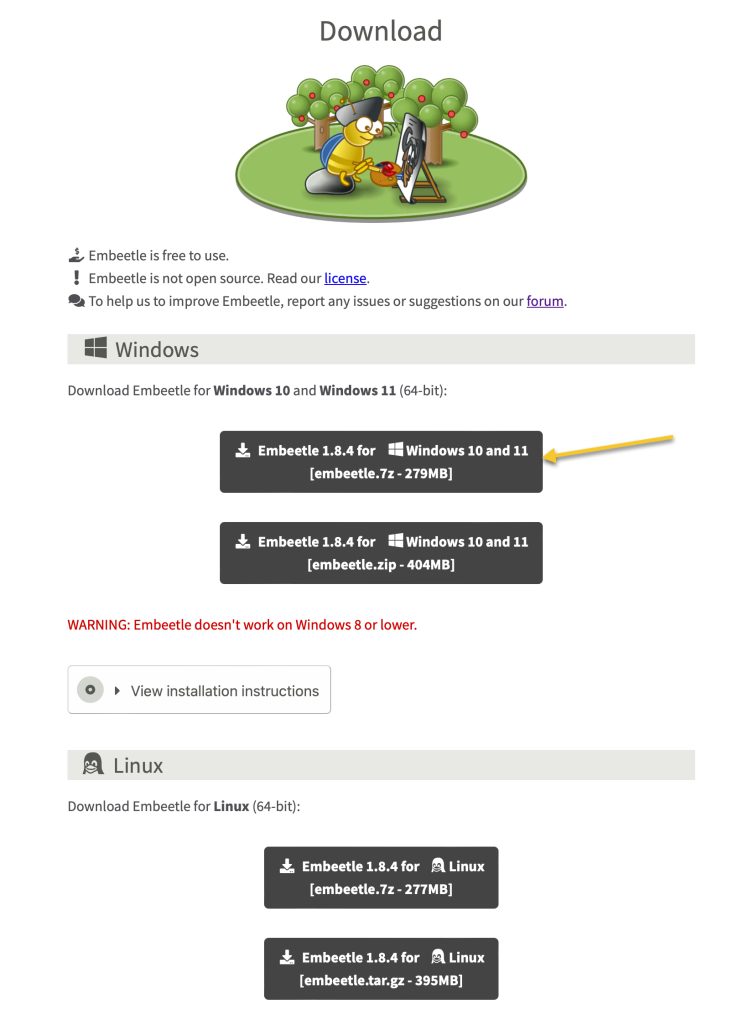
The download shall started.
After the download is completed, right click on the downloaded file and extract, use either WinRAR or 7-zip (here we are using 7-zip).
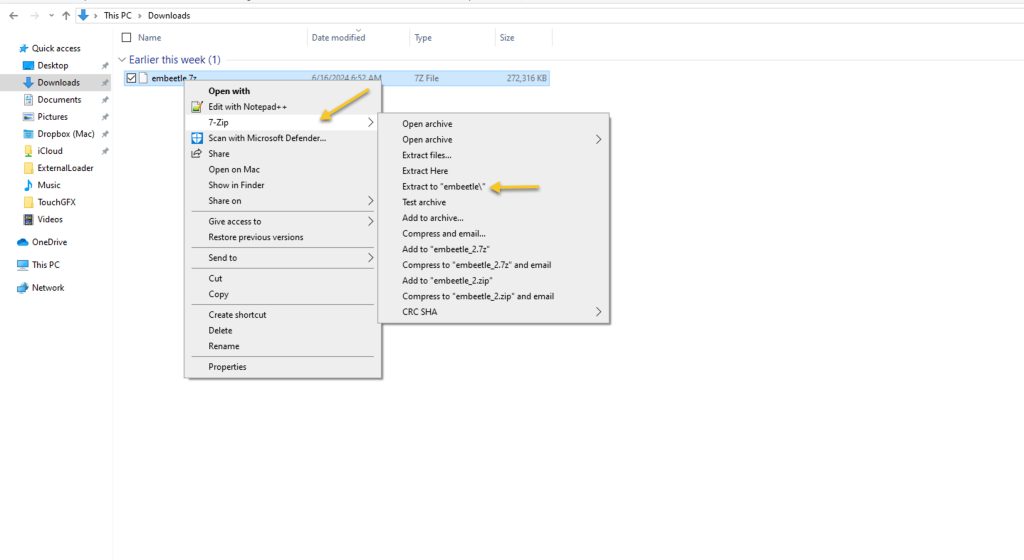
Open the extracted folder and start embeetle execution file:
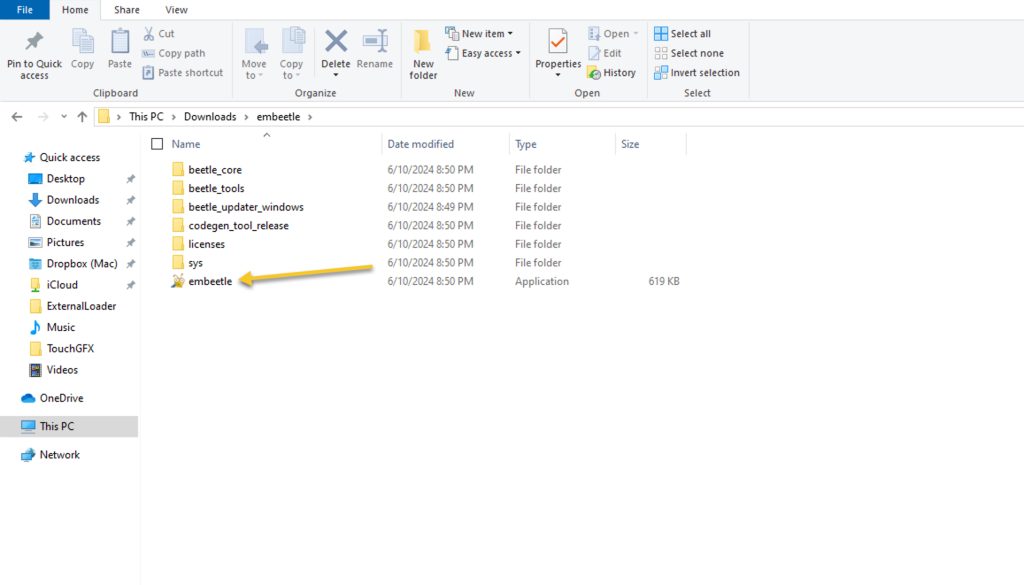
This will launch the IDE.
After while, this window will appear:
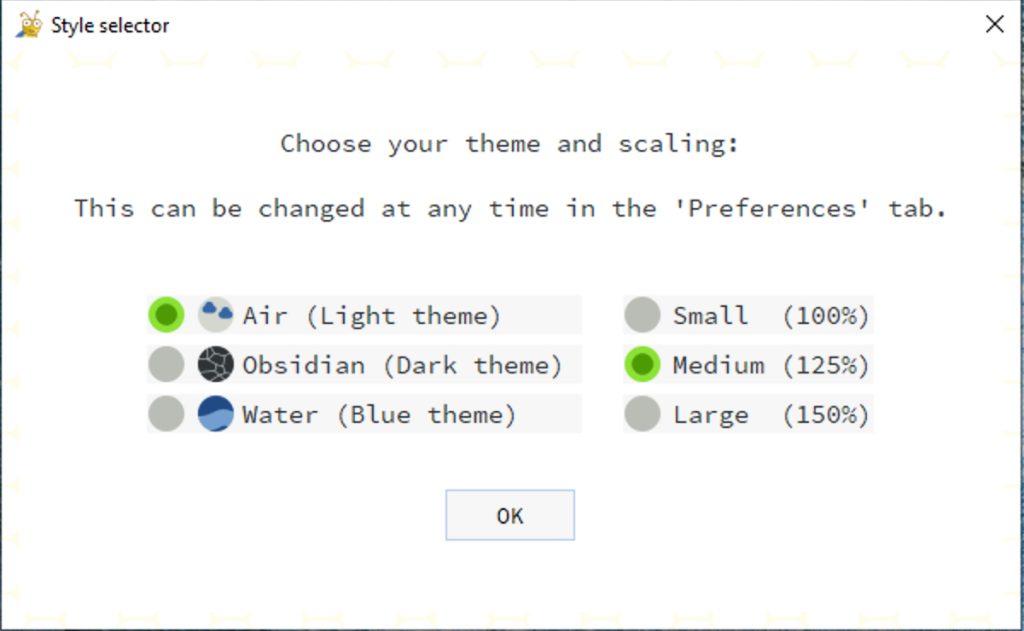
Select the theme and select the size.
Press on OK.
Then this window will appear:
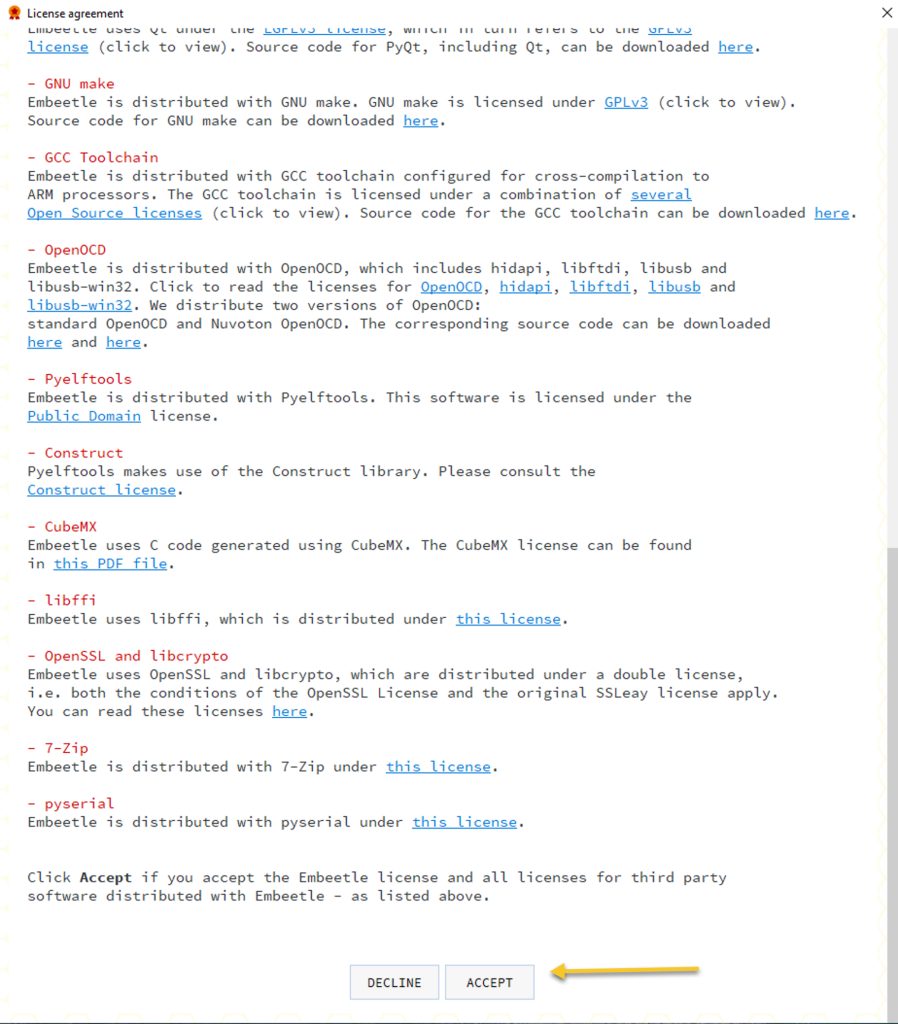
Read the License agreement carefully and click on accept.
This window will appear:
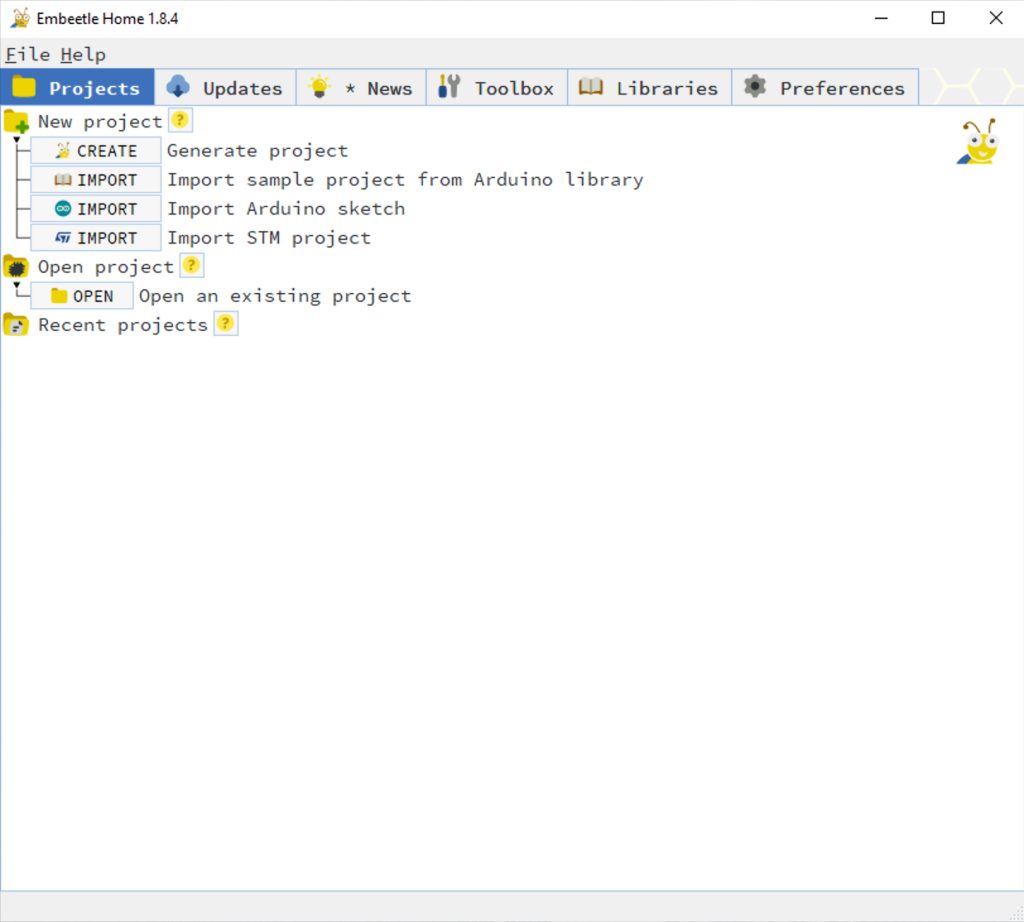
Now, click on create:
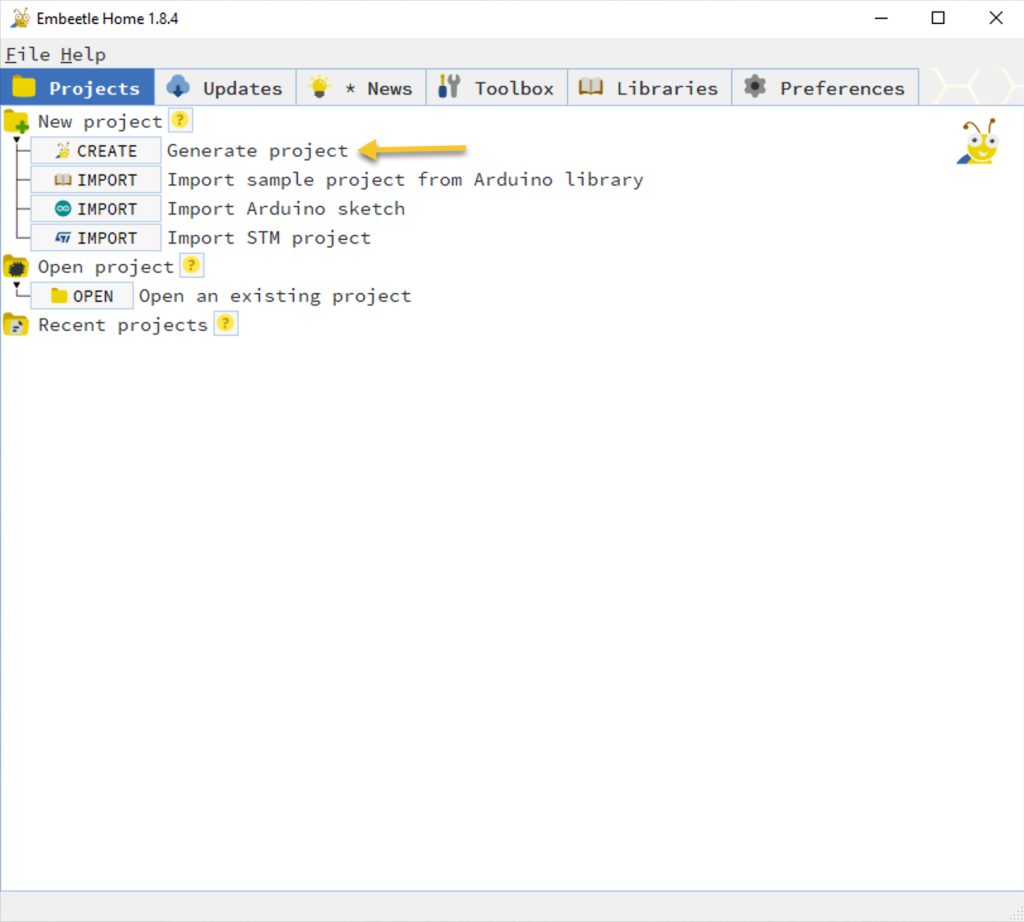
Then this window will appear:
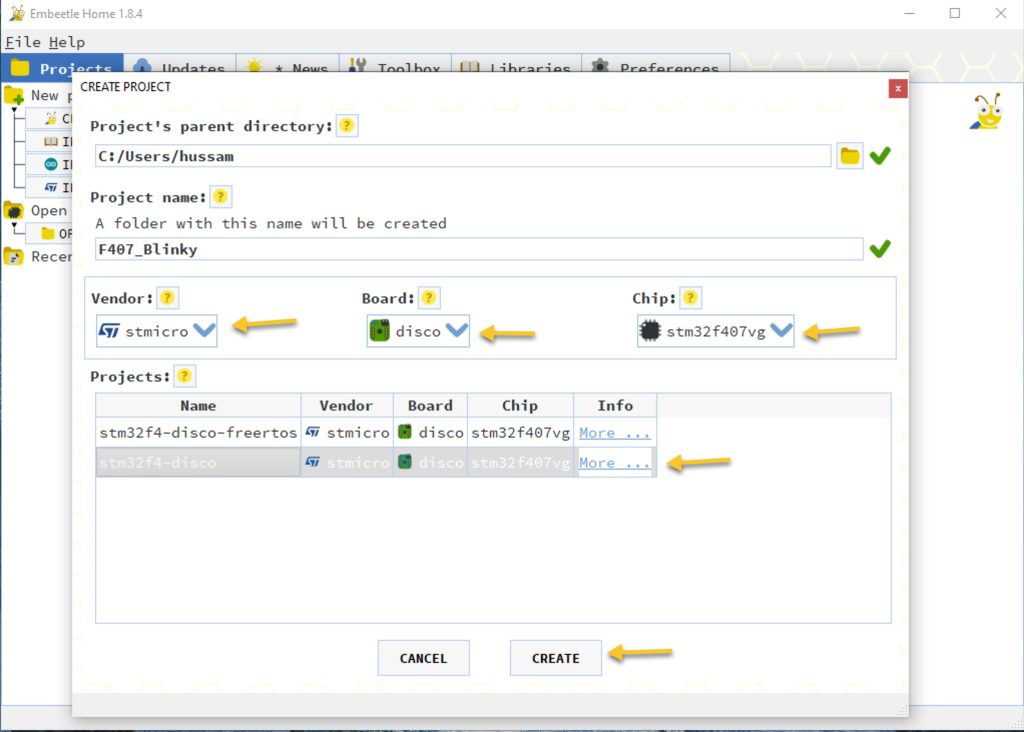
- Give the project a name (blinky in this case).
- Select the vendor as STMicro, board as disco and chip STM32F407VG.
- Select the second from projects since it has no freeRTOS.
- Click on Create.
Then this window shall appear:
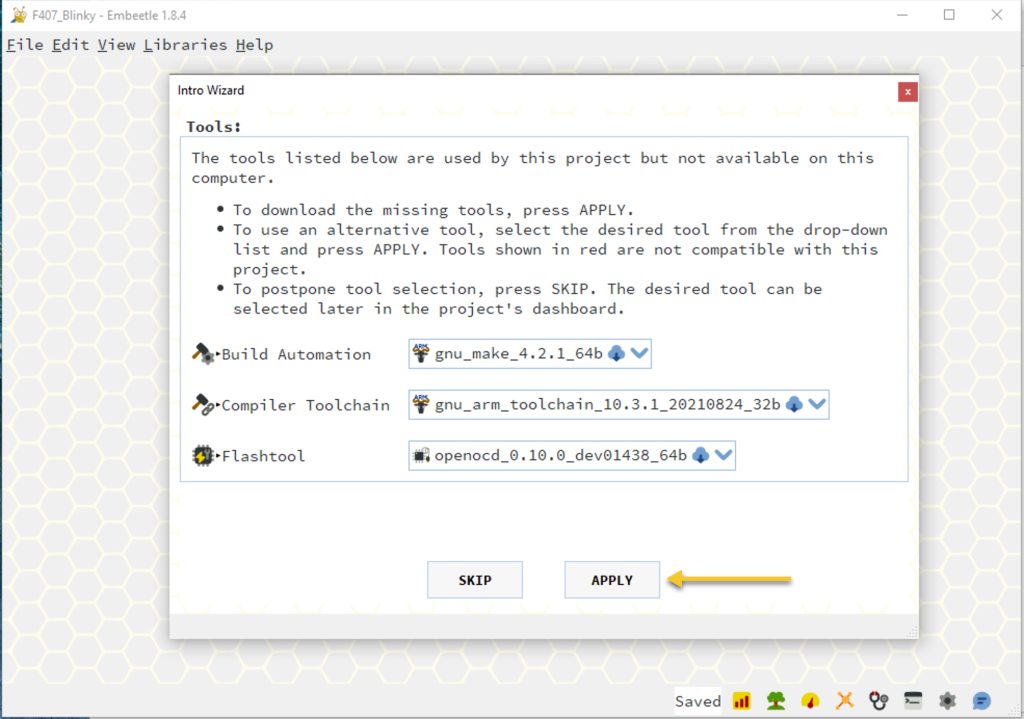
Click on Apply to download and install the required tools.
Then the project window shall appear:
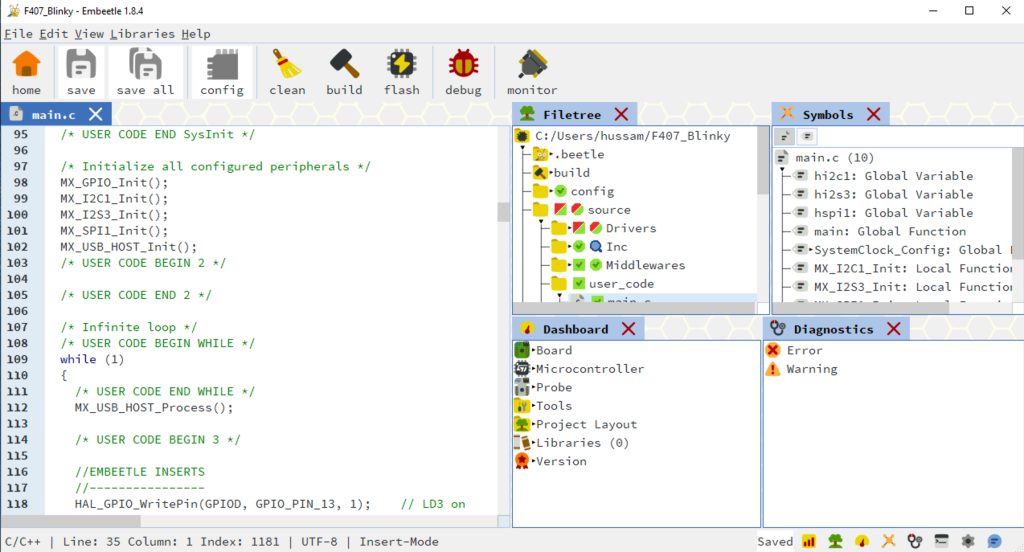
Now, connect your STM32F407-disco to your computer.
From the window:
- Click on build.
- Then click on flash.
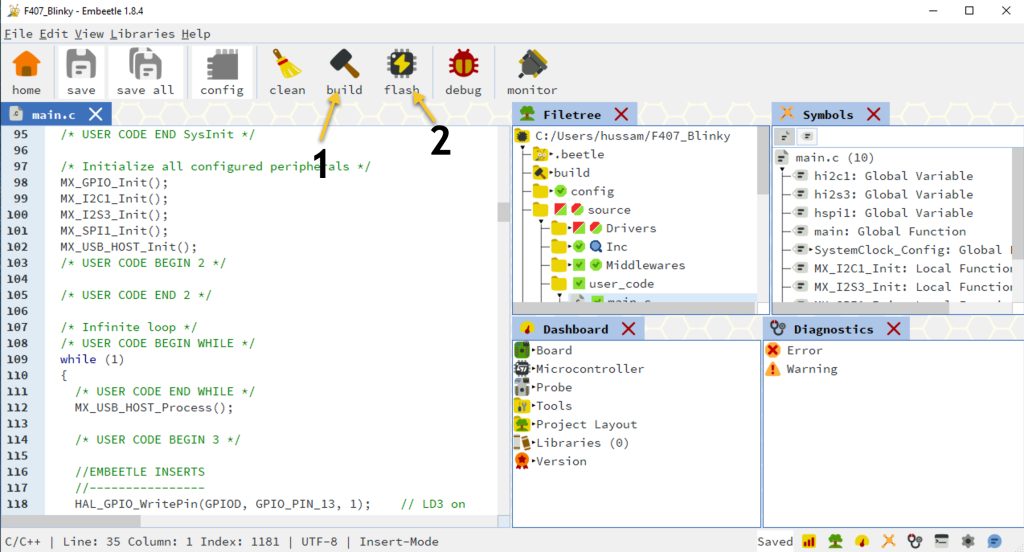
3. Results:
After the flash, your STM32F407-disco shall start flashing the LED in certain scenarios as shown in this video.
Feel free to use the IDE as you wish.
Happy coding 😉
Add Comment